|
As I was wandering around the UT Campus the other day, the thought occurred to me, "I wonder what it would have been like to have attended the Sorbonne in Paris sometime during the late Middle Ages? How would my life have been different had I attended university in the 1500's?
 What would a student of the medieval Sorbonne have thought of a modern campus such as ours? Could I have afforded college during this time and could a student of that time get accepted into the University of Texas? The Sorbonne was one of the largest universities in the world at the time and, now, University of Texas is one of the largest modern-day universities in the world. Some of the smartest minds attended Sorbonne and I, too, am one of the smartest people in the world. I would have to be very crafty in order to hook up with a medieval dude so that I could get some of these fascinating questions answered. First, I had to order a handy time machine from Amazon.com. When it finally arrived in the mail I set it up and prepared for my journey. After settling in to the contraption, I set the dials for "MIDDLE AGES" and press the start button.
What would a student of the medieval Sorbonne have thought of a modern campus such as ours? Could I have afforded college during this time and could a student of that time get accepted into the University of Texas? The Sorbonne was one of the largest universities in the world at the time and, now, University of Texas is one of the largest modern-day universities in the world. Some of the smartest minds attended Sorbonne and I, too, am one of the smartest people in the world. I would have to be very crafty in order to hook up with a medieval dude so that I could get some of these fascinating questions answered. First, I had to order a handy time machine from Amazon.com. When it finally arrived in the mail I set it up and prepared for my journey. After settling in to the contraption, I set the dials for "MIDDLE AGES" and press the start button.
The first thing I notice as I arrive in Sixteenth Century Paris is that it is very dark. But, of course, its night and electricity hasn't been invented yet. I'm outside some musty old buildings, presumably the university, and there is a lot of foot traffic. As some people pass me by, their odor is overwhelming. Lord, Dial Soap hasn't been invented yet either! I stand on the sidewalk, marveling at this spectacle before me. There is an eerie silence over the city, which I soon realize is because there are no motor vehicles or industrial city noise that I am accustomed to hearing. Without all the normal distractions, my hearing is able to detect the clopping of horses’ hooves on brick streets and conversations of people in open windows. I hear a faint voice calling me from the shadows.
"Psst. Hey Pal, can you help me out of a fix?" whispered the man.
“What kind of a fix,” I ask inquisitively.
“There are men chasing me who would like to take my money. Can you help me get away from this area?” he said quietly as he looked both ways.
"Sure, but it will cost you," I said.

Standing behind a pillar was none other than Francois de Montcorbier, alias des Loges. Francois was the notorious Student/Vagabond/Thief who was in and out of trouble during the 1550's at the Sorbonne. I told him that I recognized him from his photo in the encyclopedia and he replied that I dressed kind of odd. After brief introductions I explained to him that I have returned in time in order to document differences between our universities and time periods.
After staring at me with a worried look on his face, Francois agrees to take me on a small tour if I, in turn, agree to rescue him from the clutches of the authorities. You see, in actuality he has broken into the Sorbonne's equivalent of the financial aid office and has stolen the moneybox. Police whistles and angry shouts abound as the campus and local authorities search for the intruder.
As Francois and I sneak through the shadows of the Sorbonne, I ask him why an upper-income student, like himself, would be troubling over such a small amount of money. Was he merely on a thrill seeking adventure or perhaps some college prank?
“You see, Roger, I am not one of the wealthy students you mentioned,” he points out. “A few years back, my uncle was able to gain my admission into the university through a priest he knows who works here.”
Francois’ family is very poor and they would have preferred that he went to trade school to help with the family’s living expenses. However, Francois had been in and out of trouble for most of his teen years and his father thought the education and exposure to religion would help shape him into a productive citizen. Obviously, it was not working.
“Why do you feel this need to steal?” I ask curiously.
“A lot of the students take jobs as servants and maids to the wealthier students and staff. But, I cannot stand the idea of pandering to those stuffed shirts,” he said with a disgusting look.
Francois and I duck through a narrow alley, past several women making transactions with a group of men and then into a vast courtyard. First, I try to convey my "sense of place" in the very limited confines of the Sorbonne of the Sixteenth Century.
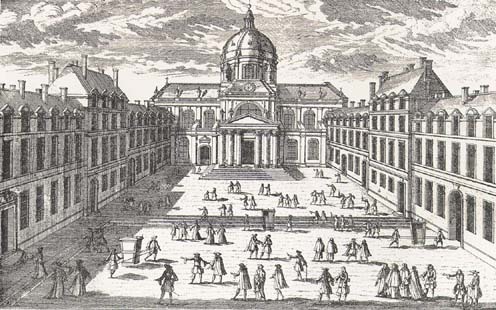 Noticeably, the buildings and spaces are built with efficiency in mind, as Paris is one of the most populous and condensed cities at the time. In fact, in a spatial sense, it is confining. Wonderfully crafted monuments and cathedrals seem to brush right up next to the street, where horses and hordes of people walk right by. The beautiful ornamentation and creative license that the architects have used on these buildings is most appealing to the eye. Roman and Gothic influence abounds and, surprisingly, the stone facades look bright and new, unlike the more weathered and matured look of the modern Sorbonne. In contrast, the University of Texas in the Twenty-first Century is stretched upon forty acres of land and most of the schools and conglomerations of buildings have stretches of green grass and large plazas to increase the open space and help reduce congestion. There is much ornamentation on University of Texas structures but most of it is more subdued and not worn upon the sleeve, like that of its French counterpart. The facades and reliefs that adorn campus buildings lie back in the shadows, almost indistinguishable to the untrained eye. Sometimes, just a glance upwards when entering a building or floor will reveal camouflaged griffins or murals of renaissance splendor. When viewing the old buildings of Sorbonne, one can marvel at the ornate statues that stand proudly on the ledges of the buildings or become mesmerized
Noticeably, the buildings and spaces are built with efficiency in mind, as Paris is one of the most populous and condensed cities at the time. In fact, in a spatial sense, it is confining. Wonderfully crafted monuments and cathedrals seem to brush right up next to the street, where horses and hordes of people walk right by. The beautiful ornamentation and creative license that the architects have used on these buildings is most appealing to the eye. Roman and Gothic influence abounds and, surprisingly, the stone facades look bright and new, unlike the more weathered and matured look of the modern Sorbonne. In contrast, the University of Texas in the Twenty-first Century is stretched upon forty acres of land and most of the schools and conglomerations of buildings have stretches of green grass and large plazas to increase the open space and help reduce congestion. There is much ornamentation on University of Texas structures but most of it is more subdued and not worn upon the sleeve, like that of its French counterpart. The facades and reliefs that adorn campus buildings lie back in the shadows, almost indistinguishable to the untrained eye. Sometimes, just a glance upwards when entering a building or floor will reveal camouflaged griffins or murals of renaissance splendor. When viewing the old buildings of Sorbonne, one can marvel at the ornate statues that stand proudly on the ledges of the buildings or become mesmerized
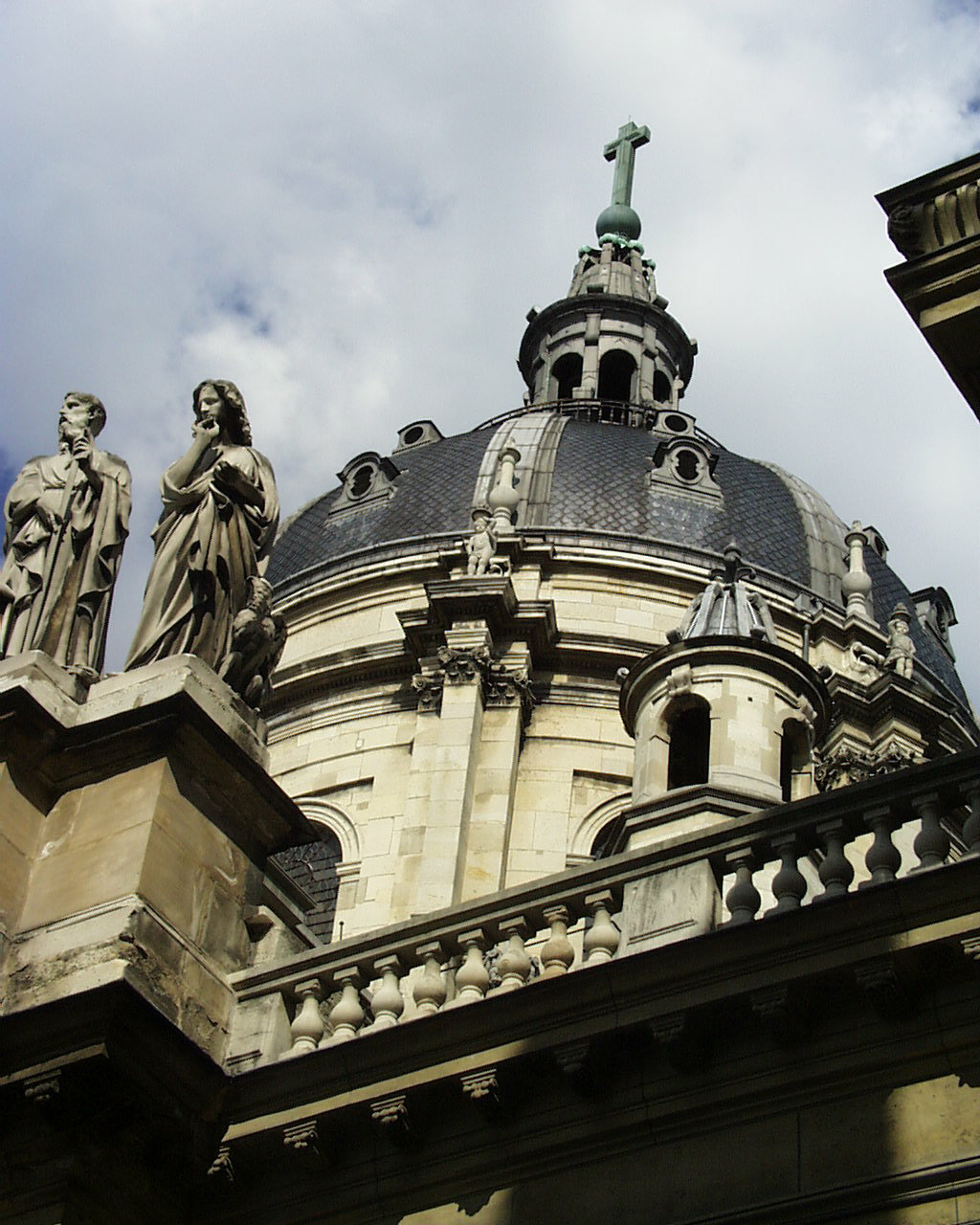 at the attention to detail from ground to tower of each residence. In the presence of these antique monuments one inhales "old world" and the influence of religious symbols, statues and qualities create a feeling of standing in the presence of divinity. The University of Texas does not convey these same overall feelings. The layout of the buildings has an administrative feel to them. One feels that business is being done and the business of learning has scant to do with worship or reflecting upon past scholars.
at the attention to detail from ground to tower of each residence. In the presence of these antique monuments one inhales "old world" and the influence of religious symbols, statues and qualities create a feeling of standing in the presence of divinity. The University of Texas does not convey these same overall feelings. The layout of the buildings has an administrative feel to them. One feels that business is being done and the business of learning has scant to do with worship or reflecting upon past scholars.
“Who are these wonderful statues modeled after?” I ask.
“I’m not really sure,” comments Francois, “But they always seem to be staring down at me judgmentally.” I can’t help but wonder why.
Similarly, the two universities share common qualities even as many centuries separate them. The Sorbonne was the hub of cultural and educational activity for all of Europe in the 1500's. And, although not the cultural capital of America, Austin is probably considered a cultural capital for Texas, which was once its own nation. Definite distinctions can be made between the curriculums of both institutions but that is to be expected. The church was still very high on the agenda of higher learning and priests and church leaders played major roles in who got accepted into university and what those people learned. In modern Texas, choices are nearly unlimited. One does not need a religious base because the economy provides more opportunity for the different disciplines. Europe of the Sixteenth Century did not have an overwhelming need for Computer Technicians, Media Consultants or Social Workers. The history department was noticeably smaller, naturally, because there was less history to know. Shakespeare did not exist and the land that is now America was only littered with roaming tribes of Native Americans and lots of buffalo.
When pondering the differences and similarities in the "sense of community" between these vastly different worlds, I was surprised to find so many commonalities.
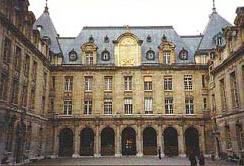 Especially sobering was the fact that the Sorbonne was open to a very diverse group of people. Naturally, the wealthy elite of Europe sent their beloved children to the Sorbonne to indoctrinate them into the ways of higher religious learning and cultural superiority. But, many of meager means flocked to the university to educate themselves for the few lower- level administrative positions that the church and schools offered. The rub with poor people was that most preferred their children to learn a trade so that they could offer more immediate relief to the poverty of the family. College was a much lengthier affair in medieval times, sometimes consuming a young person's life from the age of twelve or thirteen up to age twenty-one. Geremek observes that,"For most of them, a long spell in the schools served as a gentle preparation for the change in social status" (148-149). At least in modern times, four or five years of steady discipline will gain one a degree of some sort. Financial aid could be obtained in the way of a good recommendation from a respected priest or elder. Many times, as now, struggling students were able to participate in some sort of manual labor to help with the finances. Now, of course, hard cash is best but loans can be obtained if you are diligent and resourceful. Now, maybe a job at Wendy's would be the equivalent to being a servant to a wealthier classmate or faculty member.
Especially sobering was the fact that the Sorbonne was open to a very diverse group of people. Naturally, the wealthy elite of Europe sent their beloved children to the Sorbonne to indoctrinate them into the ways of higher religious learning and cultural superiority. But, many of meager means flocked to the university to educate themselves for the few lower- level administrative positions that the church and schools offered. The rub with poor people was that most preferred their children to learn a trade so that they could offer more immediate relief to the poverty of the family. College was a much lengthier affair in medieval times, sometimes consuming a young person's life from the age of twelve or thirteen up to age twenty-one. Geremek observes that,"For most of them, a long spell in the schools served as a gentle preparation for the change in social status" (148-149). At least in modern times, four or five years of steady discipline will gain one a degree of some sort. Financial aid could be obtained in the way of a good recommendation from a respected priest or elder. Many times, as now, struggling students were able to participate in some sort of manual labor to help with the finances. Now, of course, hard cash is best but loans can be obtained if you are diligent and resourceful. Now, maybe a job at Wendy's would be the equivalent to being a servant to a wealthier classmate or faculty member.
Student activity on the Sorbonne campus and the way in which the student body interacted with the rest of the community was nearly identical to the modern campus in Austin. The one major difference was that only males were allowed to "attend" classes in medieval times and nowadays women probably make up a majority of students on campus. Women were frequently seen on or near the Sorbonne campus but most were prostitutes or vagabonds dealing in some kind of commerce. As Geremick mentions,"The question of the presence of women in the colleges cropped up constantly" (150). Pubs and brothels were littered around the bohemian center of the university.
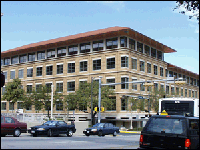 Due to the disparities in wealth amongst the diverse student body, many petty criminals blended with the faculty and used their enrollment as a cover for more sordid activity. The modern campus does not have this same dilemma but occasionally feels the need to scrutinize its membership. A good example of this would be the recent interrogations of Arab-American immigrants and students after increased terrorist attacks on the United States. Commercial businesses dealing in sin and distraction also surround the University of Texas but perhaps not quite as blatantly as their medieval counterparts. Brothels or prostitutes undoubtedly exist in the shadows but most noticeably the modern day pub flourishes as it also did in ancient times. Alcohol is still one of the most potent distractions to the college crowd. These bars are still very much centers of social activity (i.e. mating grounds and bonding centers) and no doubt, similarly used for criminal mischief as well. The medieval community had much the same reaction towards the haven for learning and its occupants in that "All the special features of the student way of life aroused impatience, irritation and even hatred" (152-153). Students of medieval Sorbonne enjoyed much more immunity from the surrounding community than present day Austin but one can still sense some hostility and jealousy from the working class in particular.
Due to the disparities in wealth amongst the diverse student body, many petty criminals blended with the faculty and used their enrollment as a cover for more sordid activity. The modern campus does not have this same dilemma but occasionally feels the need to scrutinize its membership. A good example of this would be the recent interrogations of Arab-American immigrants and students after increased terrorist attacks on the United States. Commercial businesses dealing in sin and distraction also surround the University of Texas but perhaps not quite as blatantly as their medieval counterparts. Brothels or prostitutes undoubtedly exist in the shadows but most noticeably the modern day pub flourishes as it also did in ancient times. Alcohol is still one of the most potent distractions to the college crowd. These bars are still very much centers of social activity (i.e. mating grounds and bonding centers) and no doubt, similarly used for criminal mischief as well. The medieval community had much the same reaction towards the haven for learning and its occupants in that "All the special features of the student way of life aroused impatience, irritation and even hatred" (152-153). Students of medieval Sorbonne enjoyed much more immunity from the surrounding community than present day Austin but one can still sense some hostility and jealousy from the working class in particular.
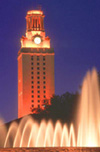 So, now Francois and I hop back into the time machine and I set the controls for Austin, Texas at the time period of Twentieth Century. As we appeared on the plaza, bullets began to pelt us. Francois is dumbfounded because he has never even seen a bullet or a gun. I realize that I have reentered the future during the shooting spree of 1966 and yank Francois back into the contraption.
So, now Francois and I hop back into the time machine and I set the controls for Austin, Texas at the time period of Twentieth Century. As we appeared on the plaza, bullets began to pelt us. Francois is dumbfounded because he has never even seen a bullet or a gun. I realize that I have reentered the future during the shooting spree of 1966 and yank Francois back into the contraption.
"What little I just saw of the future looks mighty strange," he gasped. "That was one mighty tower I saw in front of me, though."
"Sorry, Francois," I apologized. "Let me redirect us to our destination," as I reset the dial to Twenty-first Century Austin. When we finally appeared back on the plaza, Francois' eyes bugged out and a giant smile appeared on his face.
"Look at all the prostitutes in this place and they hardly wear any clothes!" he exclaimed.
"Actually, all of these women are students of the university," I reminded him.
"That is preposterous, future man!" he chuckled. "Women do not have the capacity to be great students," he said firmly.
For his own safety, I reminded him not to speak of women in such a harsh and demeaning way or that he took the risk of being mobbed and castrated.
"Women have made great strides of equality in just the last one hundred years," I remind him. "For me, I cannot imagine being in a learning environment that is not equally available to, not only men and women, but also black, white, rich, poor, you name it," I said proudly. "My mother drilled these ideas into my head and they make so much sense to me."
He mulled over this last statement in amazement. He wanted to know how this mingling of sexes affected the morals or attentions of the more serious male students.
"Well, we are taught from a very young age about sexuality and the right ways to deal with it. We have had many centuries to think about and refine the ways we deal with vice and distraction but it is still an ongoing battle," I reminded him.
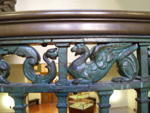 So, we spent the day walking around the campus and looking at the fine, but subtle, architecture of our beloved forty acres. He, being familiar with the mighty griffin symbol, pointed out every one he could find. He claimed that no one in the world was a better scout for the griffin than he. However, he failed to notice the cleverly concealed griffins on the stairwells of the Architecture Library entrance.
So, we spent the day walking around the campus and looking at the fine, but subtle, architecture of our beloved forty acres. He, being familiar with the mighty griffin symbol, pointed out every one he could find. He claimed that no one in the world was a better scout for the griffin than he. However, he failed to notice the cleverly concealed griffins on the stairwells of the Architecture Library entrance.
"Just this week," I reminded him, "It was a woman's keen eye that spotted that griffin and stole the extra credit from my grasp."
Works Cited
Geremek, Bronislaw. The Margins of Society in Late Medieval Paris. Ed. Jean Birrell.
Cambridge: Cambridge University Press, 1989.
Word Count: 2,426
<= Back Home
|
 What would a student of the medieval Sorbonne have thought of a modern campus such as ours? Could I have afforded college during this time and could a student of that time get accepted into the University of Texas? The Sorbonne was one of the largest universities in the world at the time and, now, University of Texas is one of the largest modern-day universities in the world. Some of the smartest minds attended Sorbonne and I, too, am one of the smartest people in the world. I would have to be very crafty in order to hook up with a medieval dude so that I could get some of these fascinating questions answered. First, I had to order a handy time machine from Amazon.com. When it finally arrived in the mail I set it up and prepared for my journey. After settling in to the contraption, I set the dials for "MIDDLE AGES" and press the start button.
What would a student of the medieval Sorbonne have thought of a modern campus such as ours? Could I have afforded college during this time and could a student of that time get accepted into the University of Texas? The Sorbonne was one of the largest universities in the world at the time and, now, University of Texas is one of the largest modern-day universities in the world. Some of the smartest minds attended Sorbonne and I, too, am one of the smartest people in the world. I would have to be very crafty in order to hook up with a medieval dude so that I could get some of these fascinating questions answered. First, I had to order a handy time machine from Amazon.com. When it finally arrived in the mail I set it up and prepared for my journey. After settling in to the contraption, I set the dials for "MIDDLE AGES" and press the start button.

 Noticeably, the buildings and spaces are built with efficiency in mind, as Paris is one of the most populous and condensed cities at the time. In fact, in a spatial sense, it is confining. Wonderfully crafted monuments and cathedrals seem to brush right up next to the street, where horses and hordes of people walk right by. The beautiful ornamentation and creative license that the architects have used on these buildings is most appealing to the eye. Roman and Gothic influence abounds and, surprisingly, the stone facades look bright and new, unlike the more weathered and matured look of the modern Sorbonne. In contrast, the University of Texas in the Twenty-first Century is stretched upon forty acres of land and most of the schools and conglomerations of buildings have stretches of green grass and large plazas to increase the open space and help reduce congestion. There is much ornamentation on University of Texas structures but most of it is more subdued and not worn upon the sleeve, like that of its French counterpart. The facades and reliefs that adorn campus buildings lie back in the shadows, almost indistinguishable to the untrained eye. Sometimes, just a glance upwards when entering a building or floor will reveal camouflaged griffins or murals of renaissance splendor. When viewing the old buildings of Sorbonne, one can marvel at the ornate statues that stand proudly on the ledges of the buildings or become mesmerized
Noticeably, the buildings and spaces are built with efficiency in mind, as Paris is one of the most populous and condensed cities at the time. In fact, in a spatial sense, it is confining. Wonderfully crafted monuments and cathedrals seem to brush right up next to the street, where horses and hordes of people walk right by. The beautiful ornamentation and creative license that the architects have used on these buildings is most appealing to the eye. Roman and Gothic influence abounds and, surprisingly, the stone facades look bright and new, unlike the more weathered and matured look of the modern Sorbonne. In contrast, the University of Texas in the Twenty-first Century is stretched upon forty acres of land and most of the schools and conglomerations of buildings have stretches of green grass and large plazas to increase the open space and help reduce congestion. There is much ornamentation on University of Texas structures but most of it is more subdued and not worn upon the sleeve, like that of its French counterpart. The facades and reliefs that adorn campus buildings lie back in the shadows, almost indistinguishable to the untrained eye. Sometimes, just a glance upwards when entering a building or floor will reveal camouflaged griffins or murals of renaissance splendor. When viewing the old buildings of Sorbonne, one can marvel at the ornate statues that stand proudly on the ledges of the buildings or become mesmerized
 at the attention to detail from ground to tower of each residence. In the presence of these antique monuments one inhales "old world" and the influence of religious symbols, statues and qualities create a feeling of standing in the presence of divinity. The University of Texas does not convey these same overall feelings. The layout of the buildings has an administrative feel to them. One feels that business is being done and the business of learning has scant to do with worship or reflecting upon past scholars.
at the attention to detail from ground to tower of each residence. In the presence of these antique monuments one inhales "old world" and the influence of religious symbols, statues and qualities create a feeling of standing in the presence of divinity. The University of Texas does not convey these same overall feelings. The layout of the buildings has an administrative feel to them. One feels that business is being done and the business of learning has scant to do with worship or reflecting upon past scholars.
 Especially sobering was the fact that the Sorbonne was open to a very diverse group of people. Naturally, the wealthy elite of Europe sent their beloved children to the Sorbonne to indoctrinate them into the ways of higher religious learning and cultural superiority. But, many of meager means flocked to the university to educate themselves for the few lower- level administrative positions that the church and schools offered. The rub with poor people was that most preferred their children to learn a trade so that they could offer more immediate relief to the poverty of the family. College was a much lengthier affair in medieval times, sometimes consuming a young person's life from the age of twelve or thirteen up to age twenty-one. Geremek observes that,"For most of them, a long spell in the schools served as a gentle preparation for the change in social status" (148-149). At least in modern times, four or five years of steady discipline will gain one a degree of some sort. Financial aid could be obtained in the way of a good recommendation from a respected priest or elder. Many times, as now, struggling students were able to participate in some sort of manual labor to help with the finances. Now, of course, hard cash is best but loans can be obtained if you are diligent and resourceful. Now, maybe a job at Wendy's would be the equivalent to being a servant to a wealthier classmate or faculty member.
Especially sobering was the fact that the Sorbonne was open to a very diverse group of people. Naturally, the wealthy elite of Europe sent their beloved children to the Sorbonne to indoctrinate them into the ways of higher religious learning and cultural superiority. But, many of meager means flocked to the university to educate themselves for the few lower- level administrative positions that the church and schools offered. The rub with poor people was that most preferred their children to learn a trade so that they could offer more immediate relief to the poverty of the family. College was a much lengthier affair in medieval times, sometimes consuming a young person's life from the age of twelve or thirteen up to age twenty-one. Geremek observes that,"For most of them, a long spell in the schools served as a gentle preparation for the change in social status" (148-149). At least in modern times, four or five years of steady discipline will gain one a degree of some sort. Financial aid could be obtained in the way of a good recommendation from a respected priest or elder. Many times, as now, struggling students were able to participate in some sort of manual labor to help with the finances. Now, of course, hard cash is best but loans can be obtained if you are diligent and resourceful. Now, maybe a job at Wendy's would be the equivalent to being a servant to a wealthier classmate or faculty member.
 Due to the disparities in wealth amongst the diverse student body, many petty criminals blended with the faculty and used their enrollment as a cover for more sordid activity. The modern campus does not have this same dilemma but occasionally feels the need to scrutinize its membership. A good example of this would be the recent interrogations of Arab-American immigrants and students after increased terrorist attacks on the United States. Commercial businesses dealing in sin and distraction also surround the University of Texas but perhaps not quite as blatantly as their medieval counterparts. Brothels or prostitutes undoubtedly exist in the shadows but most noticeably the modern day pub flourishes as it also did in ancient times. Alcohol is still one of the most potent distractions to the college crowd. These bars are still very much centers of social activity (i.e. mating grounds and bonding centers) and no doubt, similarly used for criminal mischief as well. The medieval community had much the same reaction towards the haven for learning and its occupants in that "All the special features of the student way of life aroused impatience, irritation and even hatred" (152-153). Students of medieval Sorbonne enjoyed much more immunity from the surrounding community than present day Austin but one can still sense some hostility and jealousy from the working class in particular.
Due to the disparities in wealth amongst the diverse student body, many petty criminals blended with the faculty and used their enrollment as a cover for more sordid activity. The modern campus does not have this same dilemma but occasionally feels the need to scrutinize its membership. A good example of this would be the recent interrogations of Arab-American immigrants and students after increased terrorist attacks on the United States. Commercial businesses dealing in sin and distraction also surround the University of Texas but perhaps not quite as blatantly as their medieval counterparts. Brothels or prostitutes undoubtedly exist in the shadows but most noticeably the modern day pub flourishes as it also did in ancient times. Alcohol is still one of the most potent distractions to the college crowd. These bars are still very much centers of social activity (i.e. mating grounds and bonding centers) and no doubt, similarly used for criminal mischief as well. The medieval community had much the same reaction towards the haven for learning and its occupants in that "All the special features of the student way of life aroused impatience, irritation and even hatred" (152-153). Students of medieval Sorbonne enjoyed much more immunity from the surrounding community than present day Austin but one can still sense some hostility and jealousy from the working class in particular.
 So, now Francois and I hop back into the time machine and I set the controls for Austin, Texas at the time period of Twentieth Century. As we appeared on the plaza, bullets began to pelt us. Francois is dumbfounded because he has never even seen a bullet or a gun. I realize that I have reentered the future during the shooting spree of 1966 and yank Francois back into the contraption.
So, now Francois and I hop back into the time machine and I set the controls for Austin, Texas at the time period of Twentieth Century. As we appeared on the plaza, bullets began to pelt us. Francois is dumbfounded because he has never even seen a bullet or a gun. I realize that I have reentered the future during the shooting spree of 1966 and yank Francois back into the contraption.
 So, we spent the day walking around the campus and looking at the fine, but subtle, architecture of our beloved forty acres. He, being familiar with the mighty griffin symbol, pointed out every one he could find. He claimed that no one in the world was a better scout for the griffin than he. However, he failed to notice the cleverly concealed griffins on the stairwells of the Architecture Library entrance.
So, we spent the day walking around the campus and looking at the fine, but subtle, architecture of our beloved forty acres. He, being familiar with the mighty griffin symbol, pointed out every one he could find. He claimed that no one in the world was a better scout for the griffin than he. However, he failed to notice the cleverly concealed griffins on the stairwells of the Architecture Library entrance.